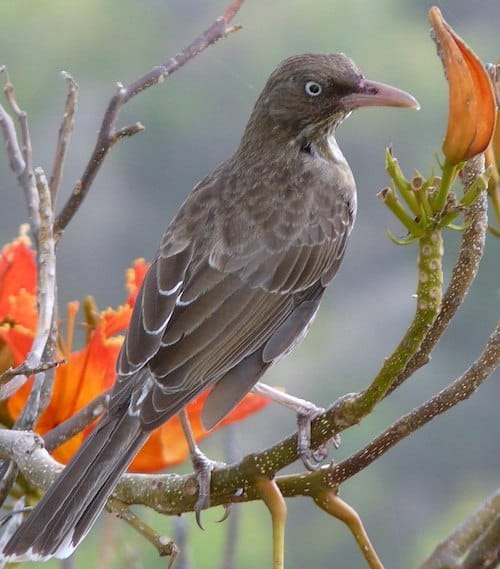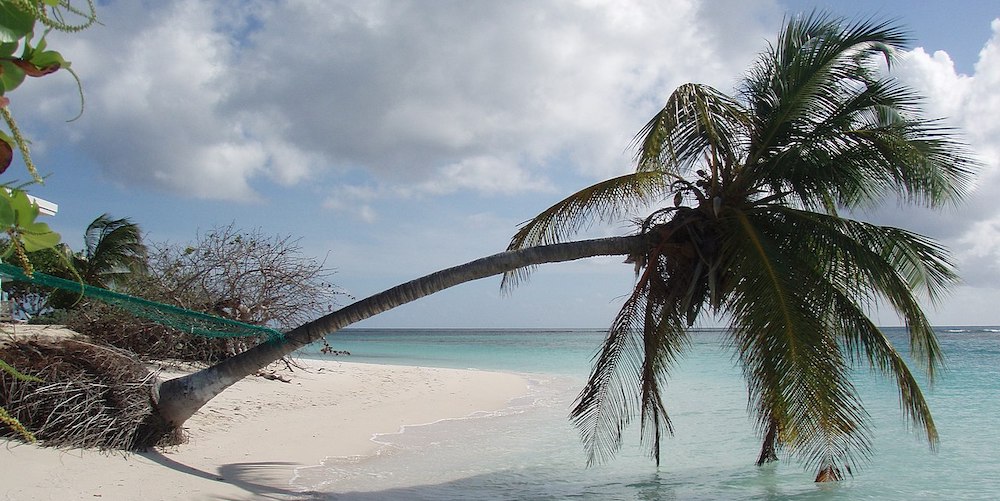British Virgin Islands

The British Virgin Islands (BVI) is a British Overseas Territory in the Caribbean, to the east of Puerto Rico and the US Virgin Islands and northwest of Anguilla. The islands are geographically part of the Virgin Islands archipelago and are located in the Leeward Islands of the Lesser Antilles being part of the West Indies. The Islands consist of the main islands of Tortola, Virgin Gorda, Anegada and Jost Van Dyke, along with more than 50 other smaller islands and cays. Sixteen of the islands are inhabited. The capital, Road Town with a population of about 10,000 people, is on Tortola, the largest island, which is about 20 km (12 miles) long and 5 km (3 miles) wide. The islands have a population of about 40,000 people, the largest proportion of whom live on Tortola. British Virgin Islanders are British Overseas Territories citizens and also British citizens.
The British Virgin Islands comprise around sixty tropical Caribbean islands, ranging in size from the largest, Tortola to tiny uninhabited islets. The North Atlantic Ocean lies to the north of the islands, and the Caribbean Sea lies to the south. Most of the islands are volcanic in origin and have a hilly, rugged terrain. Anegada is geologically distinct from the rest of the group and is a flat island composed of limestone and coral. They Islands contain the Leeward Islands moist forests and Leeward Islands xeric scrub terrestrial eco-regions.
The Islands have a tropical rainforest climate, moderated by trade winds. Temperatures vary little throughout the year. In the capital, Road Town, typical daily maxima are around 32 °C in the summer and 29 °C in the winter. Typical daily minima are around 26 °C in the summer and 23 °C in the winter. Rainfall averages about 45 inches per year, higher in the hills and lower on the coast. Rainfall can be quite variable, but the wettest months on average are September to November and the driest months on average are February and March. Hurricanes occasionally hit the islands, with the Atlantic hurricane season running from June to November.

The west end of Anegada Island – ©ScubaBear68, CC BY 2.0 via Wikimedia Commons
Tourism accounts for approximately 45% of national income. The islands are a popular destination for US citizens. Tourists frequent the numerous white sand beaches, visit The Baths on Virgin Gorda, snorkel the coral reefs near Anegada, or experience the well-known bars of Jost Van Dyke. The BVI are known as one of the world’s greatest sailing destinations, and charter sailboats are a very popular way to visit less accessible islands. Financial services account for over half of the income of the territory. The majority of this revenue is generated by the licensing of offshore companies and related services. They are a significant global player in the offshore financial services industry.
Birding the British Virgin Islands
Tortola is home to Sage Mountain National Park. This 92-acre reserve, managed by the National Park Trust, includes the 1,780-foot Mt. Sage and a forest with 15- to 20-foot tall fern trees, bulletwood trees, West Indian and Broadleaf Mahogany and White Cedars (the BVI’s national tree). It is also home to a number of species of birds, including the Antillean Crested Hummingbird, Pearly-eyed Thrasher and Caribbean Martin. The J. R. O’Neal Botanic Gardens, is a four-acre park maintained by National Parks Trust and the BVI Botanical Society.

The Baths, Virgin Gorda – ©P. Hughes, CC BY-SA 4.0 via Wikimedia Commons
The southern tip of Virgin Gorda is home to The Baths, a labyrinth of giant boulders amid grottos of clear blue water that, eons-old rock formations and caverns. Close y is the 58-acre Devil’s Bay National Park. The island also has Gorda Peak National Park, 265 acres of land that includes the 1,370-foot Gorda Peak, with its rare plants including the billbush, a leafless shrub that can’t be found anywhere else in the Virgin Islands. Prickly Pear National Park comprises 243 acres that stretch from the Sand Box Bar to the North Beach and include four salt ponds. South of the Yacht Harbour, Little Fort National Park was once the site of a Spanish fortress, of which some masonry walls remain along with the ruins of the Powder House. West of Virgin Gorda in a group of islands called The Dogs is the West Dog National Park – the volcanic island provides 24 acres of refuge for breeding Laughing Gulls, Bridled Terns and other birds.
Jost Van Dyke island has Diamond Cay National Park, off Long Bay, which is a 1.25-acre nesting site for species of boobies, terns and pelicans. The park includes Sandy Cay, where endangered leatherback turtles nest. Rhone Marine Park spans 800 acres of land and water from Lee Bay on Salt Islands to Dead Chest Island (where Blackbeard allegedly abandoned his crew with nothing but a bottle of rum). It’s the only national marine park in the BVI.
Only around 90 species are resident or breed on BVI – including Grey Kingbird, Green-Throated Caribbean Hummingbird, Lesser Antillean Bull-finch, White-cheeked Pintail, Smooth-billed Ani, Mangrove Cuckoo, Bridled Quail Dove, Zenaida Dove, Scaley-naped Pigeon and Common Ground Dove.
-
Wikipedia
GNU Free Documentation License
https://en.wikipedia.org/wiki/British_Virgin_Islands
-
Number of bird species: 210
(As at August 2024)National Bird: Zenaida Dove Zenaida macroura
-
Avibase
PDF ChecklistThis checklist includes all bird species found in British Virgin Islands , based on the best information available at this time. It is based on a wide variety of sources that I collated over many years. I am pleased to offer these checklists as a service to birdwatchers. If you find any error, please do not hesitate to report them. -
Wikipedia
Annotated ListThis is a list of the bird species recorded in the British Virgin Islands. The avifauna of the British Virgin Islands included a total of 209 species, according to Bird Checklists of the World as of June 2023 -
eBird
PDF ChecklistThis checklist is generated with data from eBird (ebird.org), a global database of bird sightings from birders like you. If you enjoy this checklist, please consider contributing your sightings to eBird. It is 100% free to take part, and your observations will help support birders, researchers, and conservationists worldwide.
-
Birds of Puerto Rico and the Virgin Islands
| By Herbert A. Raffaele, Clive Petrovic, Sergio A Colón López, Lisa D Yntema & José A Salguero Faria | Princeton University Press | 2021 | Flexibound | 224 pages, 87 plates with colour illustrations; 2 b/w maps | ISBN: 9780691211671 Buy this book from NHBS.com -
Birds of the West Indies
| By Guy M Kirwan, Anthony Levesque, Mark W Oberle & Christopher J Sharpe | Lynx Edicions | 2019 | Flexibound | 400 pages, 1600+ colour illustrations, 650+ colour distribution maps | ISBN: 9788416728176 Buy this book from NHBS.com
-
BVI Birding
Facebook Page -
BVI Birds and Wildlife
Facebook PagePost pics, share stories and discuss anything about birds, insects, marine life that exists in the British Virgin Islands. Add like minded friends that you think may be interested. -
Birds Caribbean
WebpageLike jewels in the sea, the tiny cays of the British Virgin Islands are scattered around the coast. These dramatically beautiful islets are not just postcard pretty – they provide habitat for some of the most important seabird colonies in the region. -
Jost van Dykes Preservation Society
Facebook PageA BVI Not-for-Profit organisation on Jost Van Dyke dedicated to protecting the land, its surrounding sea, the culture and history of a very special island. -
National Parks Trust of the Virgin Islands
WebpageThe National Parks Trust of The Virgin Islands (NPT) was established under the National Parks Ordinance of 1961 as a statutory body, responsible for parks and protected areas. We are a Board of Directors appointed by the Government of the British Virgin Islands, and collaborate closely with the Ministry of Natural Resources, Labour and Immigration and government departments such as Department of Agriculture and Fisheries and Town and Country Planning Department.
-
NP Devil's Bay
InformationSatellite View -
NP Mount Healthy
InformationSatellite ViewThe Mount Healthy Windmill is an outstanding symbol of the sugar plantation era in the BVI. It is the only one of its kind remaining in the entire British Virgin Islands. -
NP Mount Sage
InformationSatellite ViewThe Mount Sage volcanic peak rises to a height of 1,716 feet (523 metres), and is thus the highest point in all of the Virgin Islands. The park is located to the southwest of the island group's capital, Road Town. The park, which includes the mountain range, extends over an area of 96 acres (39 ha). The vegetation is of semi-rain forest type. There are many trails for trekking and hiking. Avifauna includes American kestrel), called kili kili hawk locally, red-tailed hawks, Caribbean martin, mountain dove, and pearly-eyed thrasher. -
National Parks
WebpageSatellite ViewInfo on all protected areas...
-
eBird
SightingseBird Caribbean is a collaborative project managed by BirdsCaribbean.
-
BVI Eco-tours
Local Tour OperatorThis large unpopulated island is home to the 3rd largest nesting seabird population in the whole Caribbean!!! The virgin coral reefs are also some of the best in the territory! Observe Magnificent Frigate Birds,Long-tailed Tropic Birds, Pelicans, Terns, all the varieties of Boobies, and many other species when visiting this island with BVI Eco-tours.
-
2009 [03 March] - Russ namitz
ReportMy wife and I were invited to a Caribbean cruise to celebrate my step mother-in-law’s 60 birthday. I was able to bird for a few hours at each port. Not optimal, but with some research and planning, I was able to see 17 life birds.
-
Mango Bay Resort
AccommodationHikers and nature lovers can explore nearby trails winding through tropical foliage and see endless vistas from hilltops.
-
British Virgin Islands
PDF ArticleSociety of Caribbean. Ornithology Special Publication -
British Virgin Islands Bird Re-introduction
WebpageVirgin Media mogul Richard Branson announced through his blog that his company is in the process of beginning a British Virgin Islands bird re-introduction. The three species—the Flamingo, the Scarlet Ibis, and the Roseate Spoonbill—haven’t been seen there for 100 to 150 years. -
Nature's Little Secrets
WebsiteAmong our most common birds are the Green-throated Carib, a small iridescent hummingbird; the delicate yellow and black Bananaquita and the American Kestrel, a falcon that can be seen soaring over the islands` valleys in search of prey… -
Ornithology of the British Virgin Islands
PDF ArticleThe British Virgin Islands (BVI), a UK Overseas Territory, is at the eastern end of the Greater Antillean chain of islands in the northern Caribbean Sea

